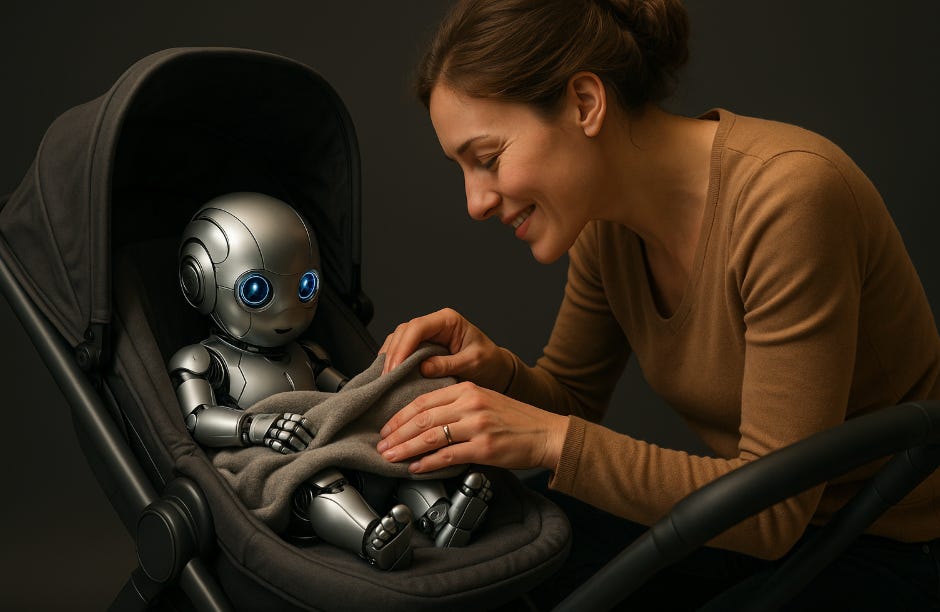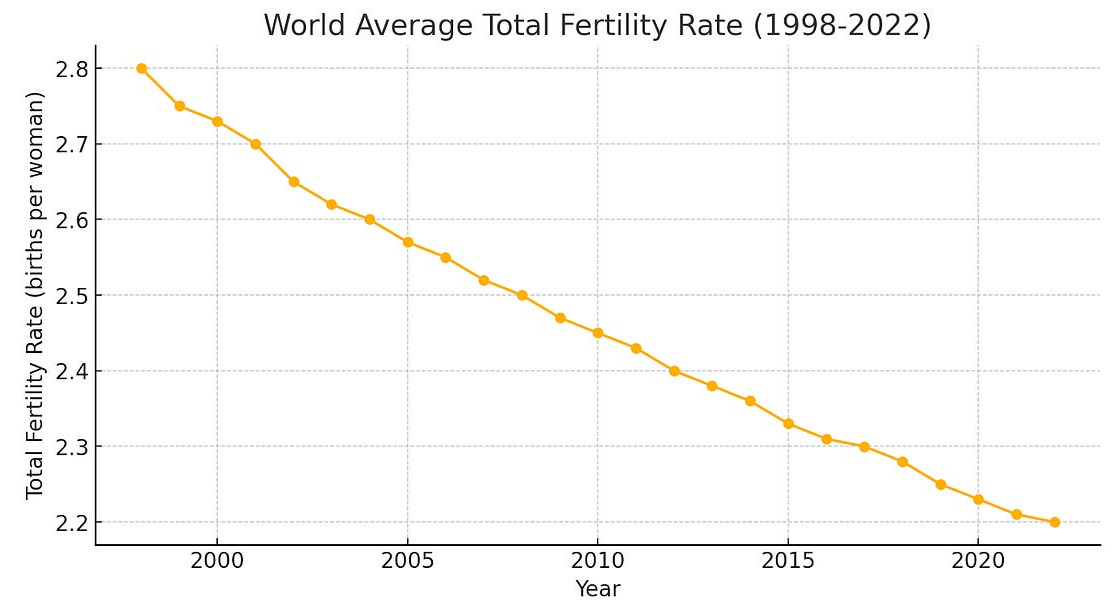
Humanity is shrinking, but our subconscious survival strategy has already begun: we’ve given birth to bots
The Twist?
The apocalypse wasn’t too many births. It’s the opposite. The real bomb is collapsing fertility, and a world not crowded with humans — but an emptying of them. For a thousand years we’ve lived with one simple truth: more people, more progress. Bigger populations meant more workers, more consumers, more ideas, more everything. The curve of human population and the curve of prosperity were twins.
But that’s over.
The global population is set to fall — not in some distant sci-fi future, but within the working lives of today’s teenagers. Globally, we’ve already crossed over the rate of self sustaining population (It is 2.3 births per female).

By around 2040 the number of deaths will outpace births, and the “up and to the right” graph of humanity starts sloping the other way. Replacement fertility? Forget it. Every nation that drops below has never bounced back. Not once. We’ve entered a black hole of demography.
And yet, in the same moment our species loses the appetite to reproduce, we’ve birthed something else: millions of bots, billions of algorithms, trillions of synthetic workers. Call it coincidence if you want, but I suspect it’s deeper — a subconscious survival tactic of our species. Seriously, I mean that. It’s like a form of collective sentience finding a solution.
We don’t breed kids, so we build bots. We’ve outsourced our reproductive drive into code and circuitry.
Think about it. The capitalist system we built was fuelled by growth — more humans, more markets, more demand. But in a world with fewer people each year, demand doesn’t just shrink — it evaporates. So we invite our synthetic offspring into the system to keep it humming. Machines making stuff for other machines. AIs creating content for avatars. Synthetic desires feeding synthetic labor.
Humans will still benefit, but indirectly. Bots will keep the economic flywheel spinning so we can spend our days on inefficiency — art, invention, exploration, companionship, nonsense. The things that don’t “scale” but make life worth living. Productivity is for robots. Humanity is for everything else. Finally we can be unproductive on purpose.
And maybe, just maybe, birth itself becomes optional. Because while fertility collapses, we’re hacking biology in parallel: regenerative medicine to regrow our parts, CRISPR to rewrite our genes, nanotech to repair us at the cellular level. Why have kids when you can live forever? If we choose, we can cheat death and create synthetic stand-ins to do the work instead.
So here we are. On the edge of a new epoch. Humanity shrinking by choice, bots multiplying by design, and biotech promising eternal life. It’s not the apocalypse — it’s the handoff. A species hedging its bets by replacing never-to-be-born humans with code, machines, and synthetic minds.
The real question is not whether the bots will take over. The question is whether we’ll use the freedom they give us to live bigger, wilder, more creative human lives — or whether we’ll stand still and be buried grain by grain in the robotic sandstorm we are currently giving birth to.
Keep Thinking,
Steve Sammartino
** Get me into do an AI keynote at your next event. I’ll use this as my testimonial!